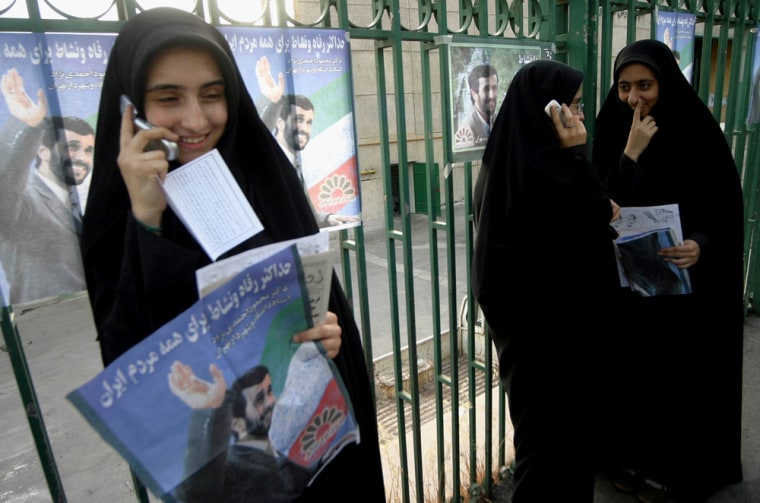QOM, Iran — At the Imam Mojtaba theological school, the 1979 Islamic revolution is never far from the minds of students. And the teachings of Ayatollah Ruhollah Khomeini, the late leader of the revolution, include how to vote in Friday's presidential election.
"The next president should follow in the footsteps of Khomeini," said Mohammed Kargar, wearing the robe of a religious scholar-in-the-making.
"The leader has told us what to do," added Hamid Zadeh, referring to Ayatollah Ali Khamenei, Khomeini's successor and supreme religious leader in Iran today.
The runoff pits former president Ayatollah Hashemi Rafsanjani, a self-styled progressive, against Tehran’s hard-line mayor, Mahmoud Ahmadinejad, the surprise No. 2 finish in last week’s first round of polling.
The holy city of Qom was the birthplace of the revolution that ousted Iran's monarchy. Khomeini lived in Qom before heading into exile in France, returning when the U.S.-backed shah's regime collapsed.
Khomeini's ideological fervor is still heard in Qom today. But not everywhere are Iranians following the ideals of 26 years ago.
New revolution
If Qom is the seat of the revolution, the Internet is its virtual successor. And the blog is its online leader.
Iranian-language blogs are among the most prevalent on the Web, and in a country where 70 percent of the population is under the age of 30 they represent a demographic that is crucial to the Islamic state's future.
Logging in is a way to tune out from social restrictions under clerical rule.
"Blogging for me is a way to be creative," said Armin, a student who asked that his last name not be used.
The Web is also a window to the rest of the world.
"People can share their loneliness with each other," said Sanaz, who writes poetry in her blog.
Government is watching
Blogging can be dangerous. Like many young people, Sanaz also did not want to give her last name. Little happens in Iran without the mullahs' knowledge. Filters and monitoring by Iranian authorities make blogging a risky pastime.
Omid Memarian, a journalist and human rights activist, was jailed for 55 days for blogging about politics. Then he was forced to take back his words on state TV.
"It's so hard to criticize the political power," Memarian said. "Anyone who does puts himself in big danger."
Blogger Sanaz says she keeps two blogs -- one for her poetry and another for more critical thoughts, though she uses satire to minimize the risk of getting caught. "Then I can say I was just joking," she said.
Meantime, in Qom politics are no joking matter. At the Imam Mojtaba seminary, Iran’s future mullahs readily listed grievances with the United States and Israel, Iran's arch-foes, never wavering from the revolution’s rhetoric.
"Our religion is our policy," Ali Reza Ranjibar said.
But aside from the occasional cell phone chime, virtual and physical links to other members of Iran's burgeoning youth population appeared to be few.
